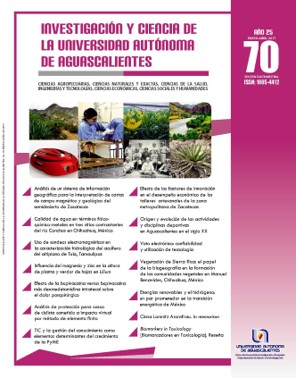Protection analysis for cyclist helmet under virtual impact by finite element method
DOI:
https://doi.org/10.33064/iycuaa2017701827Keywords:
bicycle helmet, stress analysis, impact test, simulation, sports securityAbstract
Bikes involve great risk of injury from falls; among the major risks are head injuries. Therefore, it is essential to use protective elements. This project focuses on a study to analyze protection for a helmet for cyclists using the finite element method; the entire methodology of this work was based on the Snell standards. The percentage of absorbed tension was determined by simulating a frontal impact by varying the thickness of the material of the helmet (30 mm, 20 mm and 10 mm) that protects a 4.7kg sphere of solid aluminum, emulating the head of a bicyclist.
Downloads
References
• BAKER, S. P. et al. Injuries to bicyclists: a national perspective.
Baltimore, MD, US: Johns Hopkins University, p. 91, 1993.
• CHANG, L. T. et al. Finite element analysis of the effect of motorcycle helmet materials against impact velocity. Journal of the Chinese Institute of Engineers, 26(6): 835-843, 2003.
• GAFF, M. et al. Stress Simulation in Layered Wood-Based Materials under Mechanical Loading. Material & Designs, 87, 1065-1071, 2015.
• GÓMEZ GONZÁLEZ, S. El gran libro de Solidworks. Editorial Alfaomega Grupo Editor, 2008.
• LUO, Y. y LIANG, Z. Sport helmet design and virtual impact t est by imagen-based finite element modeling. 35th Annual Intetnational Conference of the IEEE, EMBC (Engineering in Medicine and Biology Society), Osaka, Japan, 3-7 July, 2013.
• LUO, Y. et al. Recent progress in application of FEM in study of non-penetrating brain injuries. Advances in Theoretical and Applied Mechanics, 1(225): 240, 2008.
• MILLS, N. J. y GILCHRIST, A. Finite-element analysis of bicycle helmet oblique impacts. International Journal of Impact Engineering, 35(9): 1087-1101, 2008.
• MILLS, N. J. y GILCHRIST, A. The effectiveness of foams in bicycle and motorcycle helmets. Accident Analysis and Prevention, 23(2): 153-163, 1991.
• NEUMAYR, G. Effect of ultramarathon cycling on the heart rate in elite cyclists. British Journal of Sports Medicine, 38(1): 55-59, 2004.
• NIETO MIRANDA, J. J. Análisis de esfuerzos de compresión en el cráneo humano por medio del método del elemento finito. Revista Mexicana de Ingeniería Biomédica, XXVI(1): 16-21, 2005.
• ROBERTS, O. Manual completo de triatlón. 1. España: Hispano europea, p. 34, 2012.
De páginas electrónicas
• BIZIRUTAS.COM. [Imagen]. Recuperada de http://bizirutas.com/wp-content/uploads/As%C3%AD-funciona.jpg
• SÁNCHEZ, J. Ponen su vida en un casco patito. El Universal, Sección Nación, domingo 15 de marzo de 2015. Recuperado el 15 de marzo de 2016, de http://archivo.eluniversal.com.mx/nacion-mexico/2015/impreso/ponen-su-vidaen-un-cascopatito-224170.html
• SNELL MEMORIAL FOUNDATION. Snell B90A helmet standard. As required by CPSC for helmets worn by children ages 4 years and below, B90C Addendum, 1990. Recuperado de http://www.smf.org/standards/b/b90astd
• SNELL MEMORIAL FOUNDATION. Use la cabeza y póngase un casco [Tríptico]. North Highlands, CA, US: SNELL MEMORIAL FOUNDATION, 2015. Recuperado el 21 de marzo de 2016, de http://www.smf.org/ssec/b_span_broch.pdf
• TATOO.WS. [Imagen]. Recuperada de https://tatoo.ws/files/public/tips/cintasajustecasco.jpg
Downloads
Published
How to Cite
License
Las obras publicadas en versión electrónica de la revista están bajo la licencia Creative Commons Atribución-NoComercial-CompartirIgual 4.0 Internacional (CC BY-NC-SA 4.0)









